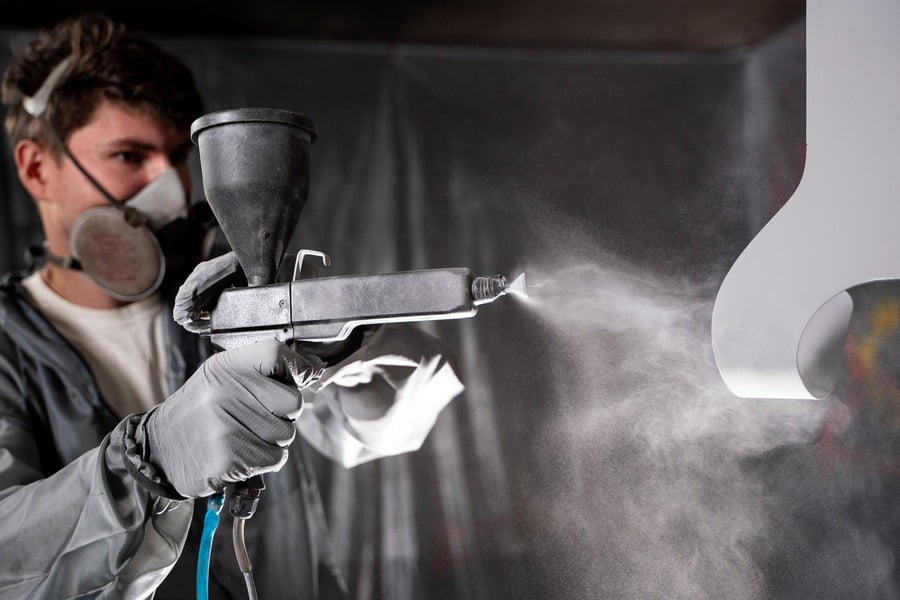Spray foam insulation has emerged as a popular choice among homeowners seeking to enhance their homes’ energy efficiency. However, concerns often surface regarding off-gassing, the process by which chemicals are released into the air.
How long does spray foam insulation off-gas? In this comprehensive guide, we will reveal the mystery of spray foam insulation off-gassing, providing clear insights and dispelling any lingering doubts.
Table of Contents
- How Long Does Spray Foam Insulation Off-Gas?
- Type of Foam Used
- Ventilation: The Accelerator
- Temperature and Humidity Dynamics
- The Impact on Indoor Air Quality
- Managing Indoor Air Quality
- Conclusion
How Long Does Spray Foam Insulation Off-Gas?
Spray foam insulation’s off-gassing duration, a crucial aspect to consider when optimizing your living space for energy efficiency, involves the release of chemicals into the air following installation. This process, typically spanning from 24 hours to several days, can impact indoor air quality due to the presence of volatile organic compounds (VOCs). Understanding the nuances of off-gassing duration is paramount to making informed decisions about your home environment.
Type of Foam Used
The type of spray foam insulation you choose plays a pivotal role in determining the off-gassing duration. Two main types, open-cell and closed-cell foam, behave differently in this regard. Open-cell foam, with its airy structure, typically off-gasses for a shorter period compared to its denser counterpart, closed-cell foam. This understanding empowers homeowners to make informed decisions based on their preferences and time constraints.
Ventilation: The Accelerator
Ventilation serves as a catalyst in accelerating the off-gassing process. By promoting adequate airflow in the insulated area, VOCs are dispersed more effectively, leading to a quicker reduction in their concentration. Homeowners should prioritize ventilation strategies during the initial post-installation period to optimize indoor air quality promptly.
Temperature and Humidity Dynamics
Environmental conditions, specifically temperature and humidity, contribute significantly to the off-gassing timeline. Warmer temperatures and lower humidity levels tend to accelerate the process, allowing for a more efficient release of VOCs. Understanding and manipulating these environmental variables can be a strategic approach for homeowners aiming to minimize the off-gassing duration.
The Impact on Indoor Air Quality
As we strive for energy-efficient homes, spray foam insulation often stands out as an attractive option. However, alongside its thermal enhancement benefits, a crucial consideration arises – the impact of spray foam insulation off-gassing on indoor air quality. Let’s explore the intricacies of this impact, examining its short-term and long-term implications.
Short-Term Effects
In the initial period following installation, homeowners may experience mild and temporary effects on indoor air quality. These effects are primarily attributed to the release of volatile organic compounds (VOCs) during the off-gassing process. Common short-term symptoms may include slight respiratory discomfort, headaches, or eye irritation. It’s crucial to note that these effects are typically transient and tend to fade as off-gassing diminishes.
Long-Term Considerations
Extensive studies and research have consistently indicated that the long-term impact of spray foam insulation off-gassing on indoor air quality is minimal. The initial phase, characterized by the release of VOCs, is temporary. As time progresses, the concentration of these compounds significantly decreases. This means that the potential for long-term adverse effects on indoor air quality wanes, providing homeowners with peace of mind regarding the safety of their living environment.
Managing Indoor Air Quality
While understanding the impact of spray foam insulation on indoor air quality is essential, it’s equally important to explore strategies for managing and improving air quality throughout the off-gassing period and beyond.
Ventilation Strategies
Implementing effective ventilation strategies during and after the off-gassing period is crucial. This involves ensuring proper airflow through the treated areas, allowing for the swift dispersion of VOCs and the introduction of fresh outdoor air. Open windows and doors whenever possible, and consider using fans to circulate air throughout the house.
Monitoring Systems
Employing indoor air quality monitoring systems can provide real-time insights into the levels of VOCs and other pollutants. This proactive approach enables homeowners to take corrective measures if needed, ensuring a continuous focus on creating a healthy indoor environment. Consider using air purifiers with activated carbon filters to remove VOCs from the air.
Choosing Low-VOC Alternatives
For those particularly concerned about indoor air quality, opting for low-VOC or eco-friendly spray foam alternatives is a viable solution. These formulations minimize the release of potentially harmful compounds, aligning with a commitment to both energy efficiency and air quality.
Conclusion
In conclusion, spray foam insulation offers numerous benefits for homeowners seeking to enhance their homes’ energy efficiency and thermal comfort. While off-gassing is a natural process associated with spray foam installation, it is typically temporary and can be effectively managed through proper ventilation, monitoring, and the use of low-VOC alternatives.
If you’re considering spray foam insulation for your home, consult with a professional to create a more energy-efficient and comfortable home. Contact Ener-Spray today to learn more about spray foam insulation solutions, or schedule a free consultation.
